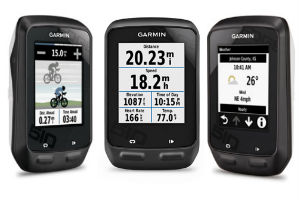 Whilst you would be hard pushed to find a full-function bike computer for under £100 the RFLKT from Wahoo Fitness offers an affordable and surprisingly comprehensive solution by utilising the power of the iPhone.
Whilst you would be hard pushed to find a full-function bike computer for under £100 the RFLKT from Wahoo Fitness offers an affordable and surprisingly comprehensive solution by utilising the power of the iPhone.
Put simple the RFLKT mirrors, or reflects (hence the name minus some vowels and a random K), various popular iPhone apps, including Strava, Cyclemeter and own-brand Wahoo Fitness, bringing all the data wirelessly to a neat handlebar-mounted screen. Out of the box the RFLKT includes a ‘Quick Start Guide’ so stripped back it may as well say ‘look online’, which, to all intense and purposes, it does. Thankfully the online instructions are comprehensive, easy to follow and exceptionally straight forward. It’s a quick step to pair the RFLKT with the iPhone and get the chosen app running and synced – beyond that the complexity is really up to the user with no end or tweaks and personalisation available.
There are a number of particularly useful functions to the RFLKT not least the ability to customise a number of screens to only illustrate the data you require most often – with more info available at the touch of a button, of which the RFLKT has four (slightly stiff at first use, but quickly bedding in.) And, if you’re the kind of cyclist who listens to music on the ride rather than paying attention to your surroundings, you can even control volume straight from the handlebars.
 Whilst you could achieve much of this by mounting your iPhone direct onto the bike it’s obviously advantageous to have that tucked away in a jersey pocket or seatpost bag, safe from weather and potential tumbles. The screen, monochrome but of sufficient quality, is also much more readable than using just an iPhone screen, which are notoriously reflective in bright conditions.
Whilst you could achieve much of this by mounting your iPhone direct onto the bike it’s obviously advantageous to have that tucked away in a jersey pocket or seatpost bag, safe from weather and potential tumbles. The screen, monochrome but of sufficient quality, is also much more readable than using just an iPhone screen, which are notoriously reflective in bright conditions.
There are though a couple of issues to take note of: using Bluetooth is an infamous drain on the iPhone’s already infamous battery life and you’re going to feel that extra time pressure on the longer training rides. That said the RFLKT can display the iPhone battery percentage so at least you’ll know how long you have left to get to where you’re going. Also those with smaller capacity iPhones or with lots of apps already loaded and taking up space are likely to struggle with being able to add more of the ready-made screen configurations within the Wahoo Fitness app itself. But at a basic level the RFLKT works exactly as advertised and does so very well.
For less than £80 the RFLKT actually achieves an incredible amount. It’s conceivable to spend entire days experimenting with the possibilities and configuring various data options rather than actually getting out there and training. But once you do all the data you could ever require will be right at your fingertips.
The RFLKT ships with everything needed for mounting on stem, bar or via ‘quarter-turn’ mount. Whilst it works predominantly with the iPhone, there are Android options with full details of compatibility here.
 Worth considering as an extra, and something Cyclo had on test with the RFLKT, is the Wahoo RPM Cadence Sensor. Costing £39.99 the wireless sensor pairs quickly with the Wahoo Fitness app and can be mounted with zip-ties to the crank or via Velcro and a silicon pod directly onto the shoe. Those that really love crunching the numbers after a ride or race will appreciate the addition metrics.
Worth considering as an extra, and something Cyclo had on test with the RFLKT, is the Wahoo RPM Cadence Sensor. Costing £39.99 the wireless sensor pairs quickly with the Wahoo Fitness app and can be mounted with zip-ties to the crank or via Velcro and a silicon pod directly onto the shoe. Those that really love crunching the numbers after a ride or race will appreciate the addition metrics.
The Wahoo Fitness RFLKT retails at £79.99 and the RFLKT +, which adds ANT+ connectivity, altimeter, and thermometer, retails at £109.99. Further details and online purchase at uk.wahoofitness.com


